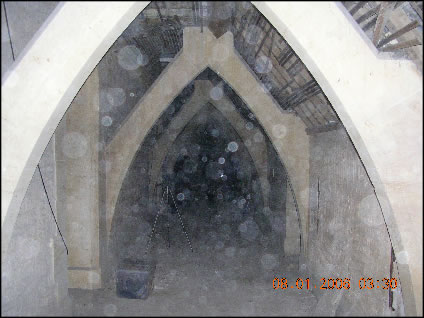Misunderstandings about Orbs
Thought you knew everything you needed to about orbs? Think again. PSI’s Dave Wood looks at why ‘orbs’ are still misunderstood by almost everyone.
It has been several years since what feels like the huge majority of anomaly investigators and researchers were finally won around to the ‘Orb Zone’ theory of orbs being naturally caused, rather than supernatural in origin.
The theory purports that ‘orbs’ in stills photography are the result of out-of-focus highlights of airborne particles. PSI conducted what is considered to be the first systematic and scientific study into orbs, funded by ASSAP and published along with a full explanation of the phenomena to TheOrbZone.com
Several years on, misunderstanding of the orb phenomena is still commonplace. From the general public sending daily photos to TheOrbZone.com to the antics of rather eccentric researchers, many still hold out hope that orbs are paranormal.
The white elephant in the corner, however, is that the majority of researchers and investigators – despite knowing that orbs are normal – are still misunderstanding the phenomena, and that this misunderstanding is fuelling the fire of those who are less in the know.
This short piece will look at three common mistakes – made by the majority – about orbs.
Fact 1: Do Not Think Three-Dimensionally
This is perhaps the most obvious of our facts, but many still forget. The highlighted particles that cause orbs are immediately in front of the camera lens, perhaps a few millimetres. But, of course, photography is 2D rather than 3D. Your orb is right
in front of the lens but because we cannot perceive depth in a photograph it looks like it is sitting on your head, your curtain, your pet, or whatnot.
This seems commonsense, now, to most of us. However when we see an explainable coincidence like a hand pointing in the direction of an orb or an orb appearing to be behind an object we tend to forget this simple rule.
Fact 2: Orbs Are Not Dust Particles
The common explanation of orbs is that they are out of focus dust particles, or airborne particles generally. This is false and naturally leads to questions like: why are they pale where dust is not? Why are they circular when dust is not? And also leads to assertions about the colour of the orb reflecting the colour of the airborne matter; the ‘yellow orb being pollen’ myth, for example.
In reality, orbs are out of focus highlights. It rarely matters what they are highlights of (except, on occasion, in the case of water). Highlights are small pinpricks of light: a tiny amount of light reflecting off something. It is this that is photographed, rather than the particle.
It might seem like a pedantic distinction, but the spread of this falsehood causes all sorts of problems.
Fact 3: Odd Looking Orbs Are Not Special
This false idea of orbs being a direct photographic representation of a tiny object inevitably leads to an over-emphasis on what orbs look like. Fairly large white or pale circular orbs have long been associated – falsely – with dust.
In the same way blue orbs have been associated with moisture; yellow orbs with pollen. So what happens when someone photographs a pink orb? Or a green one? Because tiny particles tend not to carry these colours, some conclude these new orbs are ‘special’. Something similar happens when people see an orb of an odd shape, or one particularly bright, or one with odd physical characteristics.
The false thinking is as follows: orbs are photographs of little particles / we know what these orbs and particles look like / odd-looking orbs are not little particles as we know them / odd looking orbs are paranormal.
As we know, orbs are out of focus highlights. It is the shape of the aperture that gives the orb its circular shape. It is the intensity of the light, and the colour of the light, that gives orbs their pale appearance. It is imperfections of the lens that
produces most odd colours in orbs (like the prisms of glass we all played with at school).
Most of us feel we can explain orbs well and with good conscience, so long as we know they have something vaguely to do with dust. But the next time you publish an explanation of orbs remember that if you are accidentally promoting these myths, someone else may use your words to justify an idea you know to be false.


